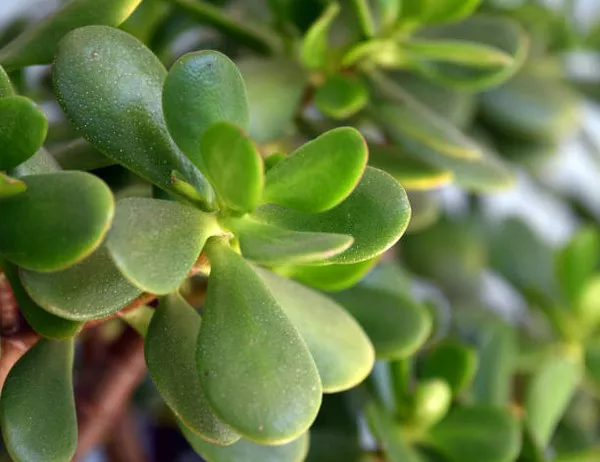Jade plants (Crassula ovata), known for their striking appearance and symbolism of prosperity, have captivated indoor gardeners for generations. These hardy succulents are easy to care for and, intriguingly, are prolific reproducers. In this article, we will explore the fascinating world of how jade plants reproduce, shedding light on their various methods and sharing tips on propagation to help enthusiasts grow their own lush, green fortune.
Understanding the Jade Plant
Before delving into the methods of reproduction, it’s crucial to understand the jade plant’s anatomy and growth patterns. Jade plants are native to South Africa and belong to the Crassulaceae family. Their succulent leaves are thick and fleshy, often taking on an elliptical or oval shape. These leaves are typically a vibrant green, although some varieties may exhibit red or yellow tints on their edges. Jade plants have a sturdy, woody stem that grows upwards, giving them their characteristic tree-like appearance.
The most common method of propagation is through leaf or stem cuttings. Jade plants are versatile in this regard, and they can reproduce successfully through several techniques, which we will discuss in detail.
Leaf Cuttings
Leaf cuttings are the most popular and straightforward method of propagating jade plants. To successfully propagate a jade plant from a leaf cutting, follow these steps:
a. Select a healthy leaf: Choose a healthy leaf from the mother plant, preferably one that is mature, plump, and free from disease or damage. Gently twist the leaf from the stem, ensuring it comes off cleanly.
b. Allow the leaf to callus: Place the severed leaf in a dry, shaded spot for about 2-3 days. This helps the cut end to callus over, reducing the risk of infection when planted.
c. Plant the leaf cutting: After the cut end has callused, plant it in well-draining soil, burying it about 1-2 inches deep. Water the soil lightly and let it dry out between waterings. It’s crucial to avoid overwatering, as it can cause the cutting to rot.
d. Provide the right conditions: Place the newly planted leaf cutting in a bright, indirect light spot. Jade plants thrive in such conditions, and this will promote healthy growth. Be patient, as it may take a few weeks to a few months for the cutting to develop roots and new growth.
Stem Cuttings
Stem cuttings are another efficient way to propagate jade plants and are often used to create fuller, bushier plants. Follow these steps for successful stem cutting propagation:
a. Select a healthy stem: Choose a healthy stem with several leaves, ensuring it is free from damage or disease. You can make a clean cut just below a leaf node (the point where a leaf attaches to the stem).
b. Allow the stem cutting to callus: Like leaf cuttings, it’s crucial to allow the cut end of the stem to callus for a few days before planting.
c. Plant the stem cutting: After the cut end has callused, plant the stem cutting in a well-draining soil mix, burying it about 1-2 inches deep. Water lightly and avoid overwatering.
d. Provide the right conditions: Place the stem cutting in a location with bright, indirect sunlight, and maintain consistent care. The stem cutting will develop roots and new growth over time.
Offsets
Jade plants can also produce offsets, which are smaller plants that grow at the base of the mother plant. These offsets can be separated and transplanted to grow into new individual plants. To propagate jade plants from offsets:
a. Wait for offsets to mature: Allow the offsets to grow until they are a reasonable size, typically around 2-3 inches in height.
b. Carefully separate the offset: Gently remove the offset from the main plant, ensuring that you also get some of the roots.
c. Plant the offset: Plant the offset in a well-draining soil mix and water it lightly. Place it in an area with bright, indirect light.
Offsets are an excellent method of propagation because they already have some root development, making them easier to establish as new plants.
Seeds
While less common, jade plants can also be grown from seeds. This method is more time-consuming and challenging than using cuttings or offsets, but it offers the opportunity to grow unique varieties. Here’s how to propagate jade plants from seeds:
a. Collect seeds: Allow the jade plant to produce flowers, which will eventually turn into seed pods. Collect the seeds once the pods have dried and split open.
b. Prepare a seed tray: Fill a seed tray with a well-draining cactus or succulent mix and lightly press the seeds into the soil.
c. Maintain humidity: Cover the seed tray with a plastic dome or a plastic wrap to create a humid environment. Place the tray in a warm location with indirect sunlight.
d. Transplant seedlings: Once the seedlings have grown large enough, transplant them into individual pots with well-draining soil.
While growing jade plants from seeds can be rewarding, it requires patience and careful attention to the seedlings’ needs.
Conclusion
Jade plants’ ability to reproduce through various methods, including leaf and stem cuttings, offsets, and seeds, has made them a favorite among succulent enthusiasts. Their hardy nature and adaptability make them an excellent choice for both novice and experienced gardeners. Whether you’re looking to propagate your existing jade plant or cultivate a new one, understanding these methods and following the care guidelines will help you achieve success in growing these beautiful and symbolic succulents. So, try your hand at jade plant propagation and watch as your indoor garden flourishes with green fortune.


